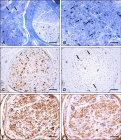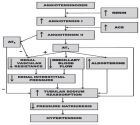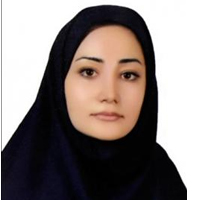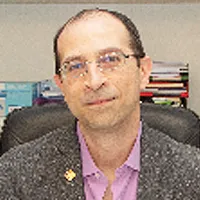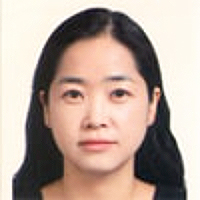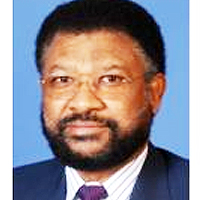Abstract
Literature Review
Using Isomets as a Foundation, a Connection Factor between Nucleation and Atomic Physics
Esraa Fareed Saeed*
Published: 10 June, 2024 | Volume 8 - Issue 1 | Pages: 012-018
The radioactive isomer was initially used to characterize persistent excited atomic states, much like molecular isomers, more than a century ago. Otto Hahn made the first atomic isomer discovery in 1921. Subsequently, it was gradually discovered that there are several kinds of nuclear isomers, such as spin isomer, K isomer, seniority isomer, and “shape and fission” isomer. Isomers are essential to the nucleosynthesis of astrophysical materials. High-accuracy nuclear reaction rate inputs are anticipated while carrying out a celestial nucleosynthesis net computation, even though a single reaction rate can have a significant impact on the whole astronomical evolutionary network. The isotopes are often considered to be in their initial state or to have levels populated in accordance with the thermal-equilibrium distribution of chances when computing nuclear synthesis rates. After all, certain isomers may have lives that reach millions of years or perhaps beyond the age of the cosmos. Thus, in an astrophysics event, such isomers might not be thermally equilibrium. Some atomic isomers—that is, astrometry—should be considered special isotopes since they are crucial to nucleosynthesis. Nuclear batteries can also be produced using nuclear isomers. Similar to the weak force, in certain specific cases such as isomer decays, the electromagnetic force could be crucial for nuclear changes. It is important to note that radioactive isomer states and radioactive ground states are not the same thing. Durable nuclear states of excitement provide insight into the nuclear framework and potential uses. Atomic and molecular changes become interconnected when the connection to the electrons in atoms is made possible by the existence of em decay routes from isomers. Notably renowned chemical decay process is inner conversion. Its inverted, nuclear excitement by free capture of electrons has been observed; however, it is debatable and needs more investigation. This study describes the connection connecting radioactive and molecular changes and discusses instances of manipulating nuclear moves related to isomers using external electromagnetic fields.
Read Full Article HTML DOI: 10.29328/journal.aac.1001050 Cite this Article Read Full Article PDF
Keywords:
Isomers; Nuclear; Radioactive; Electrons; Decay; Multi-group; Energy; Electron
References
- Marmugi L. Coherent gamma photon generation in a Bose-Einstein condensate of 135mCs. Phys Lett B. 2018;777:281-285.
- Wu Y. 93mMo Isomer depletion via beam-based nuclear excitation by electron captures. Phys Rev Lett. 2019;122: 212501.
- Broda R. Doubly magic 208Pb: high-spin states, isomers, and E3 collectivity in the yrast decay. Phys Rev C. 2017;95:064308.
- Chiara CJ, Carroll JJ, Carpenter MP, Greene JP, Hartley DJ, Janssens RVF, Lane GJ, Marsh JC, Matters DA, Polasik M, Rzadkiewicz J, Seweryniak D, Zhu S, Bottoni S, Hayes AB, Karamian SA. Isomer depletion as experimental evidence of nuclear excitation by electron capture. Nature. 2018 Feb 7;554(7691):216-218. doi: 10.1038/nature25483. PMID: 29420479.
- Chiara CJ, Carroll JJ, Carpenter MP, Greene JP, Hartley DJ, Janssens RVF, Lane GJ, Marsh JC, Matters DA, Polasik M, Rzadkiewicz J, Seweryniak D, Zhu S, Bottoni S, Hayes AB. Reply to: Possible overestimation of isomer depletion due to contamination. Nature. 2021 Jun;594(7861):E3-E4. doi: 10.1038/s41586-021-03334-4. PMID: 34079141.
- Feng J. Femtosecond pumping of nuclear isomeric states by the Coulomb collision of ions with quivering electrons. Phys Rev Lett. 2022;128:052501.
- McGrew WF. Atomic clock performance beyond the geodetic limit. Nature. 2018;564:87–90.
- Brewer SM, Chen JS, Hankin AM, Clements ER, Chou CW, Wineland DJ, Hume DB Leibrandt DR. An 27Al+ quantum-logic clock with systematic uncertainty below 10−18. Phys Rev Lett. 2023; 123: 033201.
- von der Wense L, Seiferle B, Thirolf PG. Towards a 229 Th based nuclear clock Meas. Tech. 2018; 60:1178–92.
- Thirolf PG, Seiferle B, von der Wense L. Improving our knowledge on the 229m Th isomer: towards a test bench for time variations of fundamental constants. Annalen der Physik. 2019;531:1800381.
- Nowacki F, Obertelli A, Poves A. The neutron-rich edge of the nuclear landscape: Experiment and theory. Prog Part Nucl Phys. 2021;120:103866.
- Ibrar M, Rahim K, Ullah S, Gul MT. A Brief Overview On The Highly Medicinal Plant Genus Gomphrena. The Metascience. 2024;2(1):84-91.
- Khan N, Ilyas N, Gul MT. Mycorrhizal Associations' Significance for Plant Nutrition. The Metascience. 2024;2(2):1-8.
- Ullah I, Khan N, Gul MT. Plants' Physiological Reactions to Climate Change. The Metascience. 2024;2(1):76-83.
- Minkov N, Pálffy A. Reduced transition probabilities for the gamma decay of the 7.8 eV isomer in 229 Th. Phys Rev Lett. 2017;118:212501.
- Safronova MS, Porsev SG, Kozlov MG, Thielking J, Okhapkin MV, Głowacki P, Meier DM, Peik E. Nuclear Charge Radii of ^{229}Th from Isotope and Isomer Shifts. Phys Rev Lett. 2018 Nov 23;121(21):213001. doi: 10.1103/PhysRevLett.121.213001. PMID: 30517806.
- Seiferle B, von der Wense L, Thirolf PG. Feasibility study of internal conversion electron spectroscopy of 229m Th. Eur Phys J A. 2017;53:108.
- Stellmer S, Kazakov G, Schreitl M, Kaser H, Kolbe M, Schumm T. Attempt to optically excite the nuclear isomer in 229 Th. Phys Rev A. 2018;97:062506.
- Mehlstäubler TE, Grosche G, Lisdat C, Schmidt PO, Denker H. Atomic clocks for geodesy. Rep Prog Phys. 2018 Jun;81(6):064401. doi: 10.1088/1361-6633/aab409. Epub 2018 Apr 18. PMID: 29667603.
- Planck Collaboration 2018 VIII. Gravitational lensing Astron. Astrophys. (accepted) arXiv:1807.06210
- Planck Collaboration 2018 VI. Cosmological parameters Astron. Astrophys (submitted) arXiv: 1807.06209
- Hložek R, Marsh DJE, Grin D. Using the full power of the cosmic microwave background to probe axion dark matter. Mon Not R Astron Soc. 2018;476:3063.
- Seiferle B, von der Wense L, Amersdorffer I, Arlt N, Kotulski B, Thirolf PG. Towards a precise determination of the excitation energy of the Thorium nuclear isomer using a magnetic bottle spectrometer. Nucl Instrum Methods Phys Res B. 2020;463:499-503.
- Kanber HA, Al-Taai SHH, Al-Dulaimi WAM. Recruitment of teachers for cooperative education in educational institutions. Int J Emerg Technol Learn. 2023;18(3):110-127. Available from: https://doi.org/10.3991/ijet.v18i03.36815
- Al-Taai SHH, Kanber HA, Al-Dulaimi WAM. The Importance of Using the Internet of Things in Education. Int J Emerg Technol Learn. 2023;18:19.
- Mohammed A, Al-Saadi H, Al-Taai S. Information Sources and their Role in E-learning from Iraqi College Students’ Viewpoint. Webology. 2022;19(1):1128-1150.
- Kanber HA, Al-Taai SHH, Al-Dulaimi WAM. Recruitment of teachers for cooperative education in educational institutions. Int J Emerg Technol Learn. 2023;18(3):110-127. Available from: https://doi.org/10.3991/ijet.v18i03.36815
- von der Wense L, Seiferle B, Stellmer S, Weitenberg J, Kazakov G, Pálffy A, Thirolf PG. A laser excitation scheme for 229m Th. Phys Rev Lett. 2017;119:132503.
- Freer M, Fynbo HOU. The Hoyle state in 12 Prog Part Nucl Phys. 2014;78:1-22.
Figures:
Similar Articles
-
Agricultural Residues for Future Energy Option in Sudan: An AnalysisAbdeen Mustafa Omer*. Agricultural Residues for Future Energy Option in Sudan: An Analysis. . 2018 doi: 10.29328/journal.aac.1001011; 2: 017-031
-
A Gateway to Metal Resistance: Bacterial Response to Heavy Metal Toxicity in the Biological EnvironmentLoai Aljerf*,Nuha AlMasri. A Gateway to Metal Resistance: Bacterial Response to Heavy Metal Toxicity in the Biological Environment. . 2018 doi: 10.29328/journal.aac.1001012; 2: 032-044
-
Chromium Isotopes Detection in their Ores with Minimal ErrorsLoai Aljerf*,Nuha AlMasri. Chromium Isotopes Detection in their Ores with Minimal Errors. . 2018 doi: 10.29328/journal.aac.1001013; 2: 045-054
-
Electrochemical promotion of catalysisConstantinos G Vayenas*. Electrochemical promotion of catalysis. . 2022 doi: 10.29328/journal.aac.1001031; 6: 048-050
-
Surface energy of micro- and nanowireSerghei A Baranov*. Surface energy of micro- and nanowire. . 2023 doi: 10.29328/journal.aac.1001039; 7: 025-030
-
Importance of the radiations in water splitting for hydrogen generationGunel Imanova*,Ilkhom Bekpulatov,Anar Aliyev,Sami Barkaoui. Importance of the radiations in water splitting for hydrogen generation. . 2023 doi: 10.29328/journal.aac.1001040; 7: 031-036
-
Nuclear science and magnetic carbon: a promising way from a chemical method to detect and fight cancer and tumors/neoplasmsEB Simão-Silva, NFG Serrano, MPC de Medeiros, AJ Boareto-Mendes, JF Galdino, FM Araujo-Moreira*. Nuclear science and magnetic carbon: a promising way from a chemical method to detect and fight cancer and tumors/neoplasms. . 2023 doi: 10.29328/journal.aac.1001042; 7: 047-050
-
Using Isomets as a Foundation, a Connection Factor between Nucleation and Atomic PhysicsEsraa Fareed Saeed*. Using Isomets as a Foundation, a Connection Factor between Nucleation and Atomic Physics. . 2024 doi: 10.29328/journal.aac.1001050; 8: 012-018
Recently Viewed
-
Prediction of neonatal and maternal index based on development and population indicators: a global ecological studySedigheh Abdollahpour,Hamid Heidarian Miri,Talat Khadivzadeh*. Prediction of neonatal and maternal index based on development and population indicators: a global ecological study. Clin J Obstet Gynecol. 2021: doi: 10.29328/journal.cjog.1001096; 4: 101-105
-
A Genetic study in assisted reproduction and the risk of congenital anomaliesKaparelioti Chrysoula,Koniari Eleni*,Efthymiou Vasiliki,Loutradis Dimitrios,Chrousos George,Fryssira Eleni. A Genetic study in assisted reproduction and the risk of congenital anomalies. Clin J Obstet Gynecol. 2021: doi: 10.29328/journal.cjog.1001095; 4: 096-100
-
Leiomyosarcoma in pregnancy: Incidental finding during routine caesarean sectionToon Wen Tang*,Phoon Wai Leng Jessie. Leiomyosarcoma in pregnancy: Incidental finding during routine caesarean section. Clin J Obstet Gynecol. 2021: doi: 10.29328/journal.cjog.1001094; 4: 092-095
-
Adult Neurogenesis: A Review of Current Perspectives and Implications for Neuroscience ResearchAlex, Gideon S*,Olanrewaju Oluwaseun Oke,Joy Wilberforce Ekokojde,Tolulope Judah Gbayisomore,Martina C. Anene-Ogbe,Farounbi Glory,Joshua Ayodele Yusuf. Adult Neurogenesis: A Review of Current Perspectives and Implications for Neuroscience Research. J Neurosci Neurol Disord. 2024: doi: 10.29328/journal.jnnd.1001102; 8: 106-114
-
Late discover of a traumatic cardiac injury: Case reportBenlafqih C,Bouhdadi H*,Bakkali A,Rhissassi J,Sayah R,Laaroussi M. Late discover of a traumatic cardiac injury: Case report. J Cardiol Cardiovasc Med. 2019: doi: 10.29328/journal.jccm.1001048; 4: 100-102
Most Viewed
-
Evaluation of Biostimulants Based on Recovered Protein Hydrolysates from Animal By-products as Plant Growth EnhancersH Pérez-Aguilar*, M Lacruz-Asaro, F Arán-Ais. Evaluation of Biostimulants Based on Recovered Protein Hydrolysates from Animal By-products as Plant Growth Enhancers. J Plant Sci Phytopathol. 2023 doi: 10.29328/journal.jpsp.1001104; 7: 042-047
-
Sinonasal Myxoma Extending into the Orbit in a 4-Year Old: A Case PresentationJulian A Purrinos*, Ramzi Younis. Sinonasal Myxoma Extending into the Orbit in a 4-Year Old: A Case Presentation. Arch Case Rep. 2024 doi: 10.29328/journal.acr.1001099; 8: 075-077
-
Feasibility study of magnetic sensing for detecting single-neuron action potentialsDenis Tonini,Kai Wu,Renata Saha,Jian-Ping Wang*. Feasibility study of magnetic sensing for detecting single-neuron action potentials. Ann Biomed Sci Eng. 2022 doi: 10.29328/journal.abse.1001018; 6: 019-029
-
Pediatric Dysgerminoma: Unveiling a Rare Ovarian TumorFaten Limaiem*, Khalil Saffar, Ahmed Halouani. Pediatric Dysgerminoma: Unveiling a Rare Ovarian Tumor. Arch Case Rep. 2024 doi: 10.29328/journal.acr.1001087; 8: 010-013
-
Physical activity can change the physiological and psychological circumstances during COVID-19 pandemic: A narrative reviewKhashayar Maroufi*. Physical activity can change the physiological and psychological circumstances during COVID-19 pandemic: A narrative review. J Sports Med Ther. 2021 doi: 10.29328/journal.jsmt.1001051; 6: 001-007

HSPI: We're glad you're here. Please click "create a new Query" if you are a new visitor to our website and need further information from us.
If you are already a member of our network and need to keep track of any developments regarding a question you have already submitted, click "take me to my Query."









